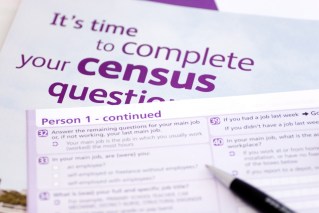The loss of flight MH370 two hours after it left Kuala Lumpur has tested the faith we have in the safety of air travel.
While air disasters are rare, the disappearance and fumbling response to the missing Malaysia Airlines jet has exposed gross inadequacies in the way air travel is monitored.
Since the Malaysia Airlines jet vanished, onlookers and the families of the missing have been left asking two major questions – (a) what happened and (b) where’s the plane?
But the mystery has also highlighted how unsafe we can be when we place our lives in the hands of airlines and the authorities responsible for monitoring them. After the events of 9/11, people asked, ‘How could this happen?’. And yet we are asking the same question about a different air disaster 13 years later.
Here, The New Daily looks at what we’ve learned about air travel since the loss of a commercial airliner and the 239 people it was carrying on a routine flight to Beijing.

CCTV footage of one of the suspected illegal passport carriers on flight 370. Photo: Getty
1. The guy sitting next to you in economy could be travelling on someone else’s passport
Ever since terrorists seized control of four American airplanes on September 11, 2001, the assumption has been that every person on a flight could be trusted, thanks to the strict security measures implemented to avoid such breaches of security.
And yet, two Iranians, aged 19 and 29, were found to be travelling on the missing flight on false Austrian and Italian passports, which were reportedly stolen from tourists in the middle of 2013.
According to Interpol, the pair were trying to migrate to Europe, and had no links to terrorism, but the revelation that each day large numbers of people fly around the world on false passports is a serious blow to notions of aviation security.
2. Our customs people don’t always check for stolen documents
We’ve learned that many passengers travelling on stolen passports could be slipping through the cracks due to the carelessness of many international airports, including our own.
The Age reported on Tuesday that Australian border officials checked just 0.001 per cent of international arrivals against the Interpol database of Stolen and Lost Travel Documents.
Interpol secretary-general Ronald Noble said in a statement that his agency is puzzled about “why only a handful of countries worldwide are taking care to make sure the persons possessing stolen passports are not boarding international flights”.
3. Pilots can be suicidal
A deliberate pilot-caused crash is an open line of investigation in the search for answers on MH370’s disappearance.
Whether this was a successful suicide attempt by the pilot, co-pilot or both, it would not be the first time a plane has been brought down by those in the cockpit.
Reportedly eight crashes in the US between 2003 and 2012 were intentional. It is also thought posible the crashes of EgyptAir Flight 990 in 1999 and SilkAir Flight 185 in 1997 were the result of pilot suicide.
The troubling theory emphasises how much we are really at the mercy of the pilots who fly us around the world.
4. You can turn off a transponder really, really easily
It seems that MH370 has taught has another lesson we should have learned from 9/11. According to The New York Times, the September 11 hijackers were quick to turn off the transponders onboard so that they could not be easily tracked.
Despite this, it seems that it was very easy for whoever was in control of MH370 to disable its transponder, one of the two types of tracking technology on board. There are conflicting reports as to whether the second system, known as ACARS, which sends text-based digital messages to the ground, was also switched off.
Is there any conceivable reason why a commercial aeroplane would need to be completely incognito? Why do pilots have this power?
5. You can fall off radar really, really easily
Despite reports that the Malaysian and Thai governments have tracked a craft that might be the missing flight, confusion still surrounds the plane’s last known location.
According to the Wall Street Journal, satellite data has shown the plane flew on for another five hours after the transponder was switched off, and yet not even this data has been able to pinpoint where the flight disappeared.
When the average traveller now steps onto a passenger jet, he knows that his flight could be invisible for hours.
6. Black boxes only work for 30 days
Black boxes are a crucial resource resort for air crash investigators. They serve two very important functions. They are a means of locating the plane and a way to glean important recordings from the cockpit.
Former commercial airline pilot Alex Hidveghy told BBC News that a black box has an expected lifespan of only 30 days “on the ocean floor”.
Nobody expects them to last forever, but surely a month is too short? And surely they should work better when they are under water.
7. International collaboration is like herding cats
Thailand has admitted its military radar tracked a plane that might have been MH370 flying west over the Malacca Strait. Its explanation for not sharing this information until Tuesday, a full 10 days after the plane went missing, was that Malaysia hadn’t asked for it.
Malaysian officials have also blamed the delay of passenger background checks on the slow response from other countries.
8. Airliners can completely disappear
Eleven days after the disappearance, the search area for the jet is larger than the entire Australian land mass, which illustrates how little information the authorities have on the whereabouts of the plane.
“The entire search area is now 2.24 million square nautical miles (7.7 million square kilometres),” Malaysia’s acting transport minister Hishammuddin Hussein said in a press briefing. “This is an enormous search area.”
We now know that it only takes the pilot flicking a switches for an airliner to vanish, and the search efforts of 26 nations are completely powerless to find it.








